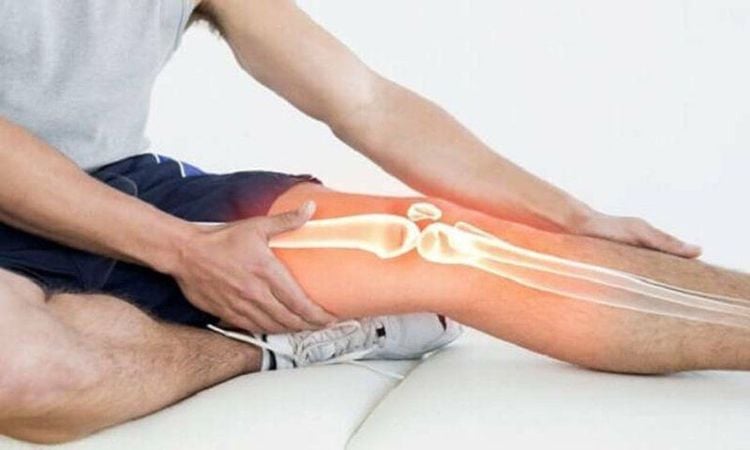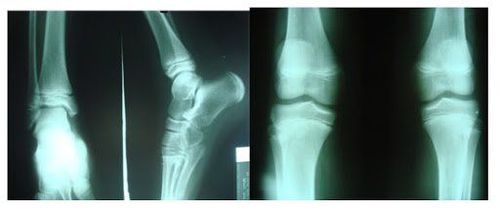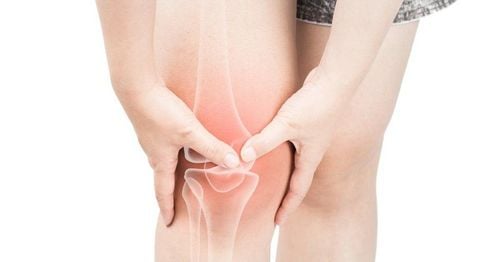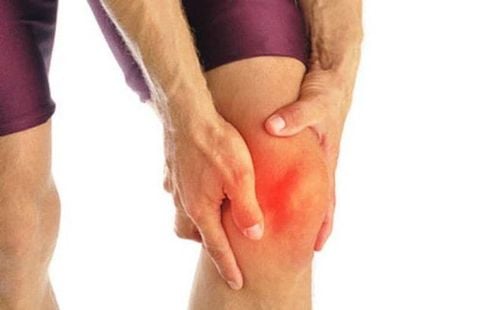This is an automatically translated article.
The article is professionally consulted by MSc, BS. Dang Manh Cuong - Doctor of Radiology - Department of Diagnostic Imaging - Vinmec Central Park International General Hospital.Meniscus are two large cartilages located at the top of the tibia in the knee, helping to protect the joint from the stresses of walking, running, and climbing. Meniscus tears are very common due to trauma caused by forceful twisting or excessive bending of the knee joint. Imaging of meniscal lesions on MRI is a useful tool to determine the extent of damage and guide appropriate treatment.
1. What is a meniscus tear?
The meniscus is derived from fibroblasts, which separate the lower end of the femur and the upper end of the tibia. There are 2 meniscuses on each side of the knee joint, including the inner meniscus and the outer meniscus. The meniscus acts like a wedge to support the stability of the knee joint during movement. At the same time, when we walk, run and jump, the knees will have to absorb tremendous forces. At this time, the cartilage layer also acts as a cushion, absorbing strong shock forces, minimizing excess force that damages the undamaged bone surface. Furthermore, thanks to the meniscus, resources from many directions are distributed widely over the entire knee instead of isolating them.In young people, meniscus is more likely to tear when the knee is bent or twisted too much, such as when turning the body and stopping suddenly. Meniscus injuries are often sports-related, such as football, tennis, or basketball. Even kneeling, deep squatting, or lifting heavy objects can sometimes lead to a meniscus tear. These cartilages can tear in any direction, depending on the direction the force is applied.
In contrast, in the elderly, meniscal tears may be due to natural degeneration. At the same time, the degeneration on the surface of the femur, becoming rougher, will tear the meniscus when they have become softer due to degeneration. In these cases, surgery is often indicated, not only to repair the meniscus but also to help repair the damaged joint surface.
2. What are the symptoms of a meniscus tear?
If you have damaged your meniscus from a meniscus tear, you may have the following signs and symptoms in your knee:Feeling of instability in the joint Swelling Stiffness Joint pain, especially when twisting or turning Knee Difficulty straightening the knee If the above symptoms persist, you do not go to the doctor and receive treatment but silently endure, the mobility of the knee joint will gradually decrease. You always have persistent knee pain, and eventually are prone to osteoarthritis, premature degeneration of the injured knee.

Rách sụn chêm gây cứng khớp
3. How to diagnose meniscus tear?
Meniscus tear is often the first diagnosis that comes to mind when a patient is admitted to the hospital with a spontaneous injury to the knee. Diagnosis will become easier when your doctor asks you to move your knees, move your legs in different positions, observe how you walk, raise your knees, and even squat.However, to help determine the cause of your signs and symptoms, the involvement of diagnostic imaging tools is necessary.
X-ray: This is a common, quick and easy way to perform. However, the value of x-rays in meniscus injuries is rather limited, because the axial structure of the cartilage is not visible on radiographs. However, this indication can help rule out other knee problems that cause similar symptoms. MRI: This imaging vehicle uses radio waves and strong magnetic fields to create detailed images of both the hard and soft tissues of your knee joint. This is the best imaging study to detect a meniscus tear. Arthroscopy: When meniscus damage is too complicated, your doctor may use an instrument called an arthroscope to examine the anatomical structures inside your knee. The device is inserted through a small incision near the knee that contains a light source and a small camera that transmits a magnified image from the inside of the knee to a screen. If necessary, surgical instruments can also be inserted simultaneously through the arthroscope or through other small incisions in the knee to repair the tear.

Một trong những phương pháp chẩn đoán rách sụn chêm là chụp X-quang
4. Image of meniscus lesions on MRI
An MRI (magnetic resonance) machine is essentially a combination of large magnets, radio frequency, and a computer to create detailed images of organs and structures inside the body. The advantage of this tool is promoted in the diagnosis of diseases in the cartilage of joints, ligaments, tendons, bones or surrounding muscles.Having a sensitivity of about 95% and specificity of 81% for lateral meniscus, and sensitivity of about 85% and specificity of 93% for lateral meniscus, MRI is the modality of choice when a meniscus tear is suspected. and describe most of the features of this lesion.
The two most important diagnostic criteria for meniscal tears on MRI are when (1) the meniscus is irregularly shaped and (2) the meniscus has high signal intensity but indistinct contact on the surface of the bone head.
Regarding the location and type of tear, the MRI image of meniscus helps to classify the following types:
Transverse meniscal tear: This is the most common type of tear, accounting for 32% of the medial meniscus. Patients with transverse meniscus tear often do not remember the specific injury status, only go to the doctor because the knee pain appears or increases more when walking and moving. Therefore, the cause of these cases is often attributed to degenerative disease, especially in patients over 40 years of age without the original knee injury. Longitudinal meniscal tear: This type of tear is seen on MRI as an extended tear parallel to the circumference of the meniscus. This is a consequence that is almost always associated with a significant knee injury. Radial meniscal tear: This is an annular tear that arises from the free edge of a meniscus and extends into the lumen. The most common site for this type of tear is in the medial meniscus and is caused by the femur that holds the body's center of gravity sliding over the edge of the tibia. Complex meniscal tears: This type of tear is when the meniscus tear does not follow a neat line but tears a flap, spreading in a plane creating separate flaps of meniscus. Sometimes a torn meniscus flap may move on its own or may be displaced by the transducer during arthroscopy. Lid meniscus tear: The meniscus tear has gone beyond the limit of the cartilage circumference, forming a fragment of cartilage that has been displaced and displaced from the site of the tear. The role of MRI of the knee in this type of tear is important for locating the flap before endoscopically. It can sometimes be difficult to find the tear because it is displaced during arthroscopy. If not removed, the torn flap can cause chronic knee pain and jam the knee joint.
5. How to treat a meniscus tear?
5.1. Initial treatment
Treatment of a patient with a meniscal tear usually begins with conservative approaches, depending on the type, size, and location of the tear in the meniscus.In most cases, a tear in a joint improves with time with treatment such as arthritis. Therefore, surgery at this point is usually not indicated. To preserve the joint, your doctor will recommend the following:
Rest: Avoid activities that aggravate your knee pain, especially any activity that requires you to twist or turn your head pillow. If your pain is severe, using crutches can help relieve pressure on your knee and promote healing. Ice: Ice can reduce knee pain and inflammation. You can use a cold pack, a frozen ice pack, or simply a towel filled with ice cubes to place on the knee for about 15 minutes at a time; while also keeping your knees elevated. Repeat every four to six hours for the first few days and gradually space out the following days as the swelling subsides. Medication: Over-the-counter pain relievers are helpful in providing relief from knee pain.

Người bệnh cần nghỉ ngơi, tránh vận động nhiều
5.2. Physical therapy
Proper physical therapy can help strengthen the muscles around the knee and in the leg to help stabilize and support knee function.5.3. Surgery
If your knee still hurts despite aggressive rehabilitation treatment, your doctor may recommend surgery. Sometimes intervention is needed to repair torn meniscus, especially in children and young adults.If the tear cannot be repaired minimally, the cartilage can be surgically removed, through small arthroscopic incisions. After surgery, though, you'll still need to do exercises to maintain strength and stability in your knee.
In the case of meniscal tears due to advanced degeneration, the doctor can combine surgery with knee replacement. However, for young people, the torn meniscus can be replaced with an implant or donor cartilage.
In summary, meniscal injury due to meniscal tear is quite common after knee injury in young people and due to degeneration in elderly people. Regardless of the cause, an MRI scan is always necessary. The meniscus images on MRI will help the orthopedist identify the damage and plan the treatment, improve the knee function for the patient, and limit the long-term sequelae.
Vinmec International General Hospital with a system of modern facilities, medical equipment and a team of experts and doctors with many years of experience in medical examination and treatment, patients can rest assured to visit. examination and treatment at the Hospital.
Before taking a job at Vinmec Central Park International Hospital from December 2017, Doctor Dang Manh Cuong has over 18 years of experience in the field of ultrasound - diagnostic imaging in Transport Hospitals. Hai Phong, MRI Department of Nguyen Tri Phuong Hospital and Diagnostic Imaging Department of Becamex International Hospital.
To register for examination and treatment at Vinmec International General Hospital, you can contact Vinmec Health System nationwide, or register online HERE.














